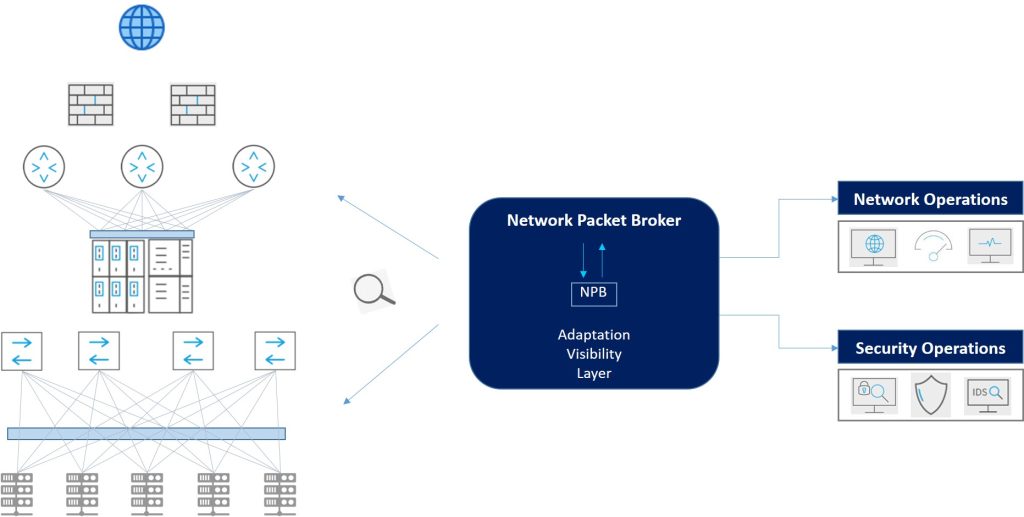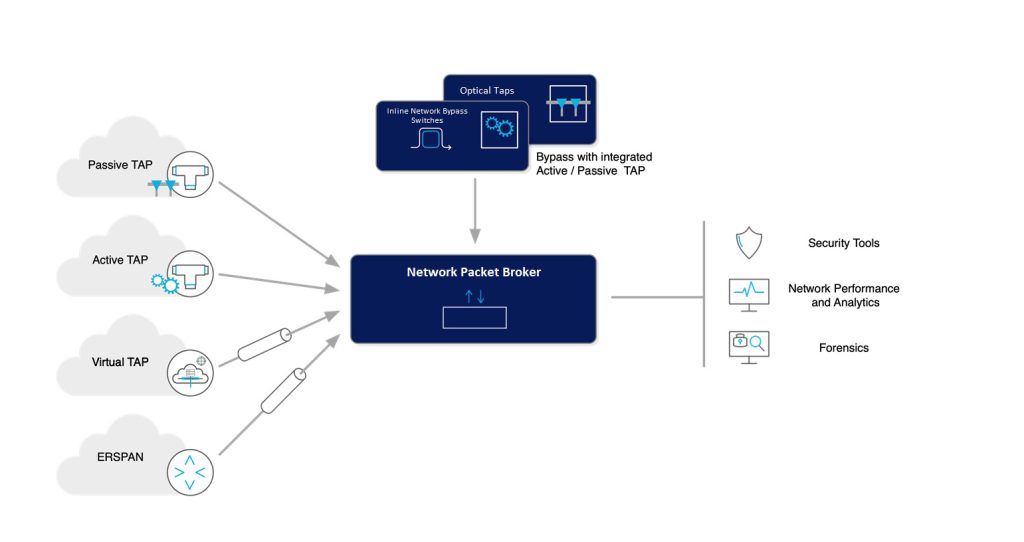Network Packet Broker
Introducing the Next Generation of Network Packet Brokers for Ultimate Flexibility, Performance and Agility
The most important thing you could add to your network...
Our Packet Brokers deliver access to network data to NetOps & SecOps to enable detection, investigation and response to threats in real-time.
Our NPB solutions are empowered by comprehensive Technology Alliance Program with world-class technology leaders and deployed in the world’s most prominent networks.
Continue Reading
What Exactly Does a Network Packet Broker Do
Our advanced Network Packet Broker solution performs a range of crucial functionalities for all types of networks, even those with extremely complex architectures and that are resource-intensive including:
- Total Network Visibility – Identifying known, suspicious, and unknown traffic passing through the network
- Network robustness – Ensuring data loss prevention and advanced filtering, as well as high availability, stripping, and other special-purpose packet capabilities. Including complex Regular Expression(REGEX) filtering and headers stripping for filtered traffic which inspection tools can process and analyze
- Network management – Not just knowing how to monitor network traffic, but also knowing what to do with each type of traffic: where to pass known (authorized) data types, and how to handle suspicious and unknown traffic to simplify APM and NPM analytics and reporting
- Advanced network security – streamline security analysis and advanced threat detection and prevention
Why You Need a Network Packet Broker
In their role as data analyzers, our Packet Brokers can also handle deduplication of redundant (duplicate) packets before they reach analysis or security tools within the network, that are passed along by multiple TAPs forwarding their data traffic. The NPBs will eliminate those duplicates and make sure network tools do not waste resources on handling redundant data.
Basic data packet manipulation schema includes one network link, to one tool (one-to-one), one network link to multiple tools (one-to-many), multiple network links to one tool (many-to-one) and multiple network links to multiple tools (many-to-many) – interlaced and load balanced into a network-wide fabric.

The Broad Family of Network Packet Brokers that Sets the Standard for (NetOps and SecOps) Agility
We offer a broad range of Network Packet Brokers that can be optimized for different use cases and application scenarios,
providing your organization with the following 5 major benefits:
- Solves architectural complexity whilst creating clear segmentation of network traffic to networking monitoring and security tools
- Ultra-high granular view of packet flows from any TAP use case including virtual TAP solution
- Simplify Application and Network Performance (APM / NPM) analytics and reporting
- Streamline security analytics and advanced threat inspection and prevention
- Maximize tool efficiency and scale – optimization of traffic capacity and reduction of duplicated and non-relevant headers and payload

Best Practices for Choosing a Network Packet Broker
Network packet brokers differ from manufacturer to manufacturer – and even within the manufacturer’s offerings, there may be significant variations (i.e. they will have distinctive features or levels of functionality). Therefore, differentiating and understanding the essential features versus the ‘nice-to-have’ ones – with respect to your current and future needs – is of paramount importance, especially when weighing initial costs versus ROI.
In addition to their standard general capabilities (such as previously mentioned traffic management, network robustness, deduplication, filtering, and aggregation) manufacturers are evolving their NPB offerings with new facets and features. As an example, some manufacturers now offer a new breed of modular NPBs that support both active and passive TAP devices (that can be easily attached to the NPBs). In this way, network designers can place a modular NPB inline, within the network, and then add as many TAP devices as needed (with their respective monitoring tools), thus significantly simplifying wiring, and other network design issues.
In addition, some NPB vendors have been known to customize the packet broker functionality, to tailor features to adapt to specific IT requirements or to specific industries and their needs.
Here is a handy mini-checklist of required and recommended ‘nice-to-have’ features to look for, when selecting a network packet broker:
- High availability (HA) / business continuity (BC) robustness
- Ability to handle deep packet inspection (DPI)
- Selective or full data traffic aggregation and regeneration as well as load balancing
- Filtering and data packet deduplication features
- Centralized administration including a manageable interface (Web, GUI, or CLI)
- Optimized buffering and other high-performance features
- Support for inline monitoring devices
- Support for passive inspection and analysis tools
Another aspect worth considering, is understanding how the NPB reacts to specific brokering issues, such as in a failover scenario (how it will handle traffic flow if it, or some connected network element, should fail). Of course, technical specifications such as latency and flow thresholds should also be taken into account when deciding on a selection.
